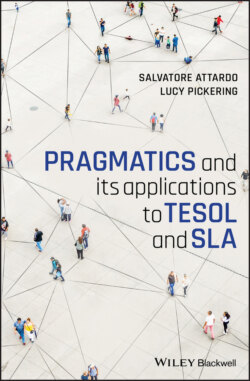Читать книгу Pragmatics and its Applications to TESOL and SLA - Salvatore Attardo - Страница 10
1.1 What Do We Mean by Meaning?
ОглавлениеMeaning can be a complex and off-putting topic: many students are discouraged by the difficult terminology and symbolism of logic, which is often used in its presentation, or are confused by the fact that there exist many conflicting theories of meaning, unlike the relative simplicity of morphology and phonology. It does not matter that if you scratch below the surface, both phonology and morphology are as conflicted as semantics. Most students never get the chance to enter semantics.
Conversely, others may feel that there’s nothing to be studied there: after all, “cow” means “cow” and if I say “cow” I mean “cow” and that’s it. What could be simpler? All you would need to teach to a learner of a foreign language would be the vocabulary. Is that a realistic view of language teaching? Of course not. There is much more to speaking a foreign language than plugging in words. In fact, even within a single language, what words convey may change. Consider the sentence: Nice driving! The meaning of the words is very clear: “nice” indicates a positive assessment and “driving” refers to operating and specifically directing a vehicle. However, Nice driving! could be uttered by a spouse to another who has just driven them to the airport in record time at rush hour, or to a spouse who just crashed the car into a tree, causing significant damage to the car. Note how the meaning of the words “nice” and “driving” is not affected at all by the change in situations. What changes is that the speaker means nice literally in the first situation and ironically in the second. So, even assuming that the meaning of words was simple and straightforward (it is not, incidentally!), the meaning of the utterance could change significantly. So, yes, meaning is complicated.
But, what is meaning, precisely? Meaning is the result of an act of semiosis conducted by an agent.2 Semiosis is the process of producing a sign. So, to begin with, meaning is associated with signs. We will discuss precisely how in what follows.
